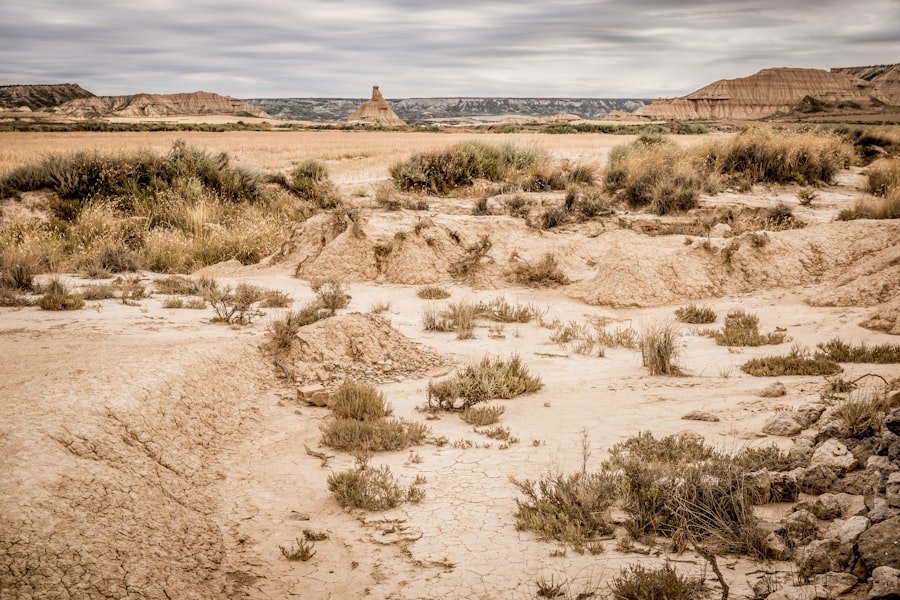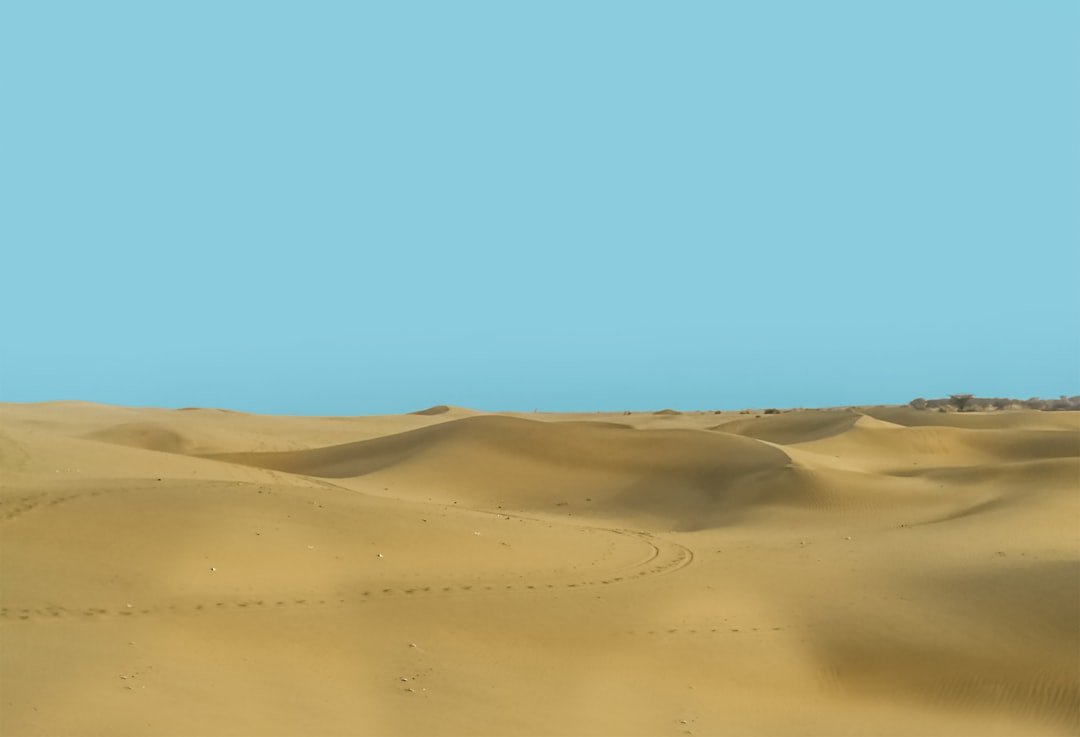Sedona, Arizona, is renowned for its stunning red rock formations, vibrant arts scene, and spiritual vortexes, but its climate plays a crucial role in shaping the experiences of visitors. The region is characterized by a high desert climate, which means it enjoys warm summers and mild winters. The average summer temperatures can soar into the 90s Fahrenheit (32-37°C), while winter temperatures typically range from the mid-30s to mid-50s Fahrenheit (1-15°C).
This variation in temperature is essential for travelers to consider when planning their visit, as it influences not only comfort levels but also the types of activities that can be enjoyed. Rainfall in Sedona is relatively sparse, with most precipitation occurring during the monsoon season from July to September. This period can bring brief but intense thunderstorms, which often clear quickly, leaving behind a fresh, vibrant landscape.
The dry air and abundant sunshine throughout the year contribute to Sedona’s appeal, making it a popular destination for those seeking outdoor adventures. However, the high elevation—approximately 4,500 feet (1,372 meters)—can lead to cooler temperatures in the evenings, even during the summer months. Understanding these climatic nuances is essential for visitors looking to maximize their enjoyment of this breathtaking locale.
Key Takeaways
- Sedona has a semi-arid climate with hot summers and mild winters, making it an ideal destination for outdoor activities year-round.
- The peak tourist seasons in Sedona are during the spring and fall, when the weather is mild and the landscape is in full bloom or vibrant fall colors.
- The best time for outdoor activities in Sedona is during the spring and fall, when the temperatures are comfortable for hiking, biking, and other outdoor adventures.
- Sedona hosts special events and festivals throughout the year, including the Sedona International Film Festival in February and the Sedona Arts Festival in October.
- Traveling to Sedona in the off-season can offer benefits such as fewer crowds, lower accommodation rates, and the opportunity to experience the town in a more relaxed atmosphere.
- Travelers should pack accordingly and be prepared for temperature fluctuations when visiting Sedona in different seasons, and consider booking accommodations and activities in advance during peak seasons.
- The best time for photography in Sedona is during the golden hours of sunrise and sunset, when the red rocks are bathed in warm, soft light.
- Travelers can take advantage of seasonal discounts and deals in Sedona, such as off-peak rates for accommodations and special packages for outdoor activities and tours.
Peak Tourist Seasons in Sedona
Sedona experiences distinct peak tourist seasons that significantly impact the overall atmosphere and availability of accommodations. The primary peak season occurs during the spring and fall months, particularly from March to May and September to November. During these times, the weather is generally mild and pleasant, making it ideal for hiking, biking, and exploring the numerous outdoor attractions.
The influx of tourists during these months can lead to crowded trails and busy restaurants, but it also means that visitors can partake in a vibrant community atmosphere filled with events and activities. Summer is another busy season in Sedona, particularly for families taking advantage of school vacations. While temperatures can be high during the day, many visitors flock to the area to enjoy its natural beauty and partake in water-related activities at nearby lakes and rivers.
However, the summer months can also bring monsoonal rains that may deter some travelers. Conversely, winter sees a drop in tourist numbers as temperatures cool significantly. While some may shy away from visiting during this time due to colder weather, winter offers a unique perspective on Sedona’s beauty, with snow occasionally dusting the red rocks and creating a picturesque landscape.
Best Time for Outdoor Activities in Sedona

For outdoor enthusiasts, timing is everything when it comes to enjoying Sedona’s breathtaking landscapes. The best time for outdoor activities largely aligns with the peak seasons of spring and fall. During these months, temperatures are comfortable for hiking and biking, typically ranging from the mid-60s to mid-80s Fahrenheit (18-30°C).
Trails such as Cathedral Rock and Bell Rock become popular destinations as visitors seek to explore the stunning vistas without the sweltering heat of summer or the chill of winter. In addition to hiking and biking, spring and fall are also ideal for other outdoor pursuits such as rock climbing and horseback riding. The clear skies and moderate temperatures create perfect conditions for climbing enthusiasts looking to tackle Sedona’s iconic sandstone formations.
Moreover, fall brings a unique opportunity for photographers and nature lovers alike as the foliage begins to change colors, providing a stunning backdrop against the red rocks. While summer offers its own set of adventures—such as swimming in nearby Oak Creek—those seeking a more temperate experience will find spring and fall to be unparalleled.
Special Events and Festivals in Sedona Throughout the Year
| Event Name | Date | Description |
|---|---|---|
| Sedona International Film Festival | February | A week-long celebration of independent films and filmmakers. |
| Sedona Yoga Festival | March | A gathering of yoga enthusiasts and teachers for workshops and classes. |
| Sedona Arts Festival | October | An annual event showcasing the work of local and national artists. |
| Sedona Winefest | September | A celebration of Arizona wines with tastings and live music. |
Sedona’s cultural calendar is rich with special events and festivals that draw visitors from near and far. One of the most notable events is the Sedona International Film Festival, held annually in late February or early March. This week-long celebration showcases independent films from around the world and features panel discussions with filmmakers, providing a unique opportunity for cinephiles to engage with industry professionals.
The festival not only highlights artistic expression but also fosters a sense of community among attendees. Another significant event is the Sedona Arts Festival, typically held in October. This festival celebrates local artists and craftspeople, featuring a wide array of artwork including paintings, sculptures, jewelry, and more.
Visitors can enjoy live music performances while browsing through booths filled with unique creations. Additionally, seasonal events such as holiday celebrations in December bring festive cheer to the town, with lights adorning the red rocks and various community gatherings taking place. These events not only enhance the visitor experience but also provide insight into Sedona’s vibrant culture.
Off-Season Travel Benefits in Sedona
Traveling to Sedona during the off-season—primarily winter—offers several advantages that can enhance a visitor’s experience. One of the most significant benefits is reduced crowds at popular attractions and trails. With fewer tourists around, visitors can enjoy a more serene experience while exploring iconic sites like Slide Rock State Park or the Chapel of the Holy Cross.
This tranquility allows for deeper connections with nature and provides ample opportunities for reflection amidst Sedona’s stunning landscapes. Additionally, off-season travel often translates into more affordable accommodations and dining options. Many hotels and restaurants offer discounts during the winter months to attract visitors, making it an excellent time for budget-conscious travelers to explore Sedona without breaking the bank.
Furthermore, winter brings its own unique charm to Sedona; occasional snowfall transforms the red rocks into a magical winter wonderland. This picturesque scenery provides an entirely different perspective on the landscape that many visitors may not experience during peak seasons.
Tips for Traveling to Sedona in Different Seasons

When planning a trip to Sedona, it’s essential to consider seasonal variations that can impact your experience. In spring and fall, layering clothing is advisable due to fluctuating temperatures throughout the day. Mornings can be cool while afternoons warm up significantly; thus, wearing layers allows for comfort during hikes or outdoor activities.
Additionally, bringing sunscreen is crucial year-round due to Sedona’s high elevation and abundant sunshine. During summer months, staying hydrated is paramount as temperatures can rise quickly. Visitors should plan outdoor activities for early mornings or late afternoons when temperatures are cooler.
It’s also wise to check weather forecasts regularly during monsoon season; sudden thunderstorms can occur but often pass quickly. In winter, while snow is less common in Sedona compared to higher elevations in Arizona, it’s still wise to prepare for colder temperatures by packing warm clothing and sturdy footwear suitable for potentially icy trails.
Best Time for Photography in Sedona
Sedona’s dramatic landscapes make it a photographer’s paradise year-round; however, certain times of year offer unique opportunities for capturing stunning images. The golden hours—early morning and late afternoon—are particularly magical as they cast warm light over the red rocks, enhancing their vibrant hues. Spring and fall are especially favored by photographers due to the softer light conditions and dynamic weather patterns that can create dramatic skies.
In addition to lighting conditions, seasonal changes also influence photography opportunities in Sedona. Fall foliage provides a striking contrast against the red rocks, creating breathtaking compositions that are highly sought after by landscape photographers. Conversely, winter scenes featuring snow-dusted formations offer a rare chance to capture Sedona’s beauty in a different light.
For those interested in astrophotography, clear winter nights provide excellent visibility of stars against the dark desert sky, making it an ideal time for capturing celestial images.
Seasonal Discounts and Deals for Travelers in Sedona
Travelers looking to explore Sedona on a budget will find that seasonal discounts abound throughout the year. Many hotels offer lower rates during off-peak months such as January through March and again from November through early December. These discounts can significantly reduce accommodation costs while still providing access to all that Sedona has to offer.
In addition to lodging deals, various attractions often provide seasonal promotions or package deals that include multiple activities at a reduced rate. For instance, guided tours may offer discounts during slower months or special rates for families traveling together. Restaurants may also feature seasonal menus or happy hour specials that allow visitors to enjoy local cuisine without overspending.
By taking advantage of these seasonal deals, travelers can experience all that Sedona has to offer while keeping their expenses manageable.
If you’re planning a trip to Sedona, you may want to consider the best time to visit this beautiful destination. According to a recent article on TakeTravelInfo, the best time to travel to Sedona is during the spring or fall when the weather is mild and the crowds are smaller. This allows you to fully enjoy the stunning red rock landscapes and outdoor activities that Sedona has to offer without feeling overwhelmed by tourists.
FAQs
What is the best time to travel to Sedona?
The best time to travel to Sedona is during the spring (March to May) and fall (September to November) when the weather is mild and the landscape is vibrant with blooming flowers or changing foliage.
What is the weather like in Sedona during the best time to travel?
During the spring and fall, the weather in Sedona is typically mild with temperatures ranging from 60°F to 80°F. There is minimal rainfall during these seasons, making it ideal for outdoor activities.
Are there any specific events or festivals during the best time to travel to Sedona?
Sedona hosts several events and festivals during the spring and fall, including the Sedona International Film Festival in February, the Sedona Yoga Festival in March, and the Sedona Arts Festival in October.
What are the popular outdoor activities to do in Sedona during the best time to travel?
During the best time to travel to Sedona, visitors can enjoy hiking, mountain biking, jeep tours, and hot air balloon rides to experience the stunning red rock landscapes and natural beauty of the area.
Is it crowded during the best time to travel to Sedona?
Sedona can be crowded during the best time to travel, especially during weekends and peak tourist seasons. It is advisable to book accommodations and activities in advance to avoid any inconvenience.
